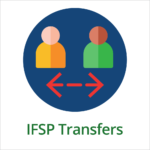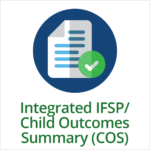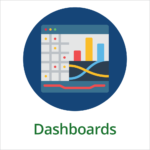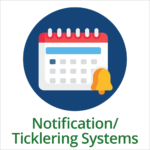Why include IFSP information in your state data system?
There are many good reasons for a state to consider including IFSP information in its Part C (early intervention) data system. For example, local programs benefit from having efficient access to IFSP information to assist with service coordination and service delivery. Access to automated tools associated with the IFSP process can help staff manage workflow, and assist with improving communication with families and among service providers. Having IFSP information in a state data system also can support state and local programs with using these data to answer important questions about program operations, improvement, and accountability.
The resources here are intended to support decision-making for states that wish to develop or enhance an IDEA Part C data system. Many states already incorporate IFSP data into their data systems or are thinking about doing so. Some states may want to develop an entire online IFSP, whereas others may want to include only certain types of IFSP data. In either case, states can benefit from learning about the data system features other states are using to collect and facilitate the reporting and use of IFSP data. In this toolkit, you can explore data system features as they relate to IFSP data collection.
What You’ll Find
In this toolkit, you can explore data system features as they relate to IFSP data collection. For each feature, a comprehensive set of resources and information is provided, including:
- Connections to the DaSy Data System Framework;
- Potential data elements needed to develop various aspects of the feature;
- A list of functionality options that could be used to implement the feature;
- Key design considerations;
- State examples,* and
- Related technical assistance resources.
To use this toolkit, click on a topic below. Explore each feature to gain a broader understanding of it and to see how other states have incorporated it into their data systems. Keep in mind that specific business requirements underlie each of these features and state examples. Don’t just take the information in this toolkit and try to develop the feature. First identify your state program’s needs and then use these resources to help develop and refine your business requirements (see DaSy’s Developing and Sharing Your Business Requirements to Build a Better Data System resource). For further information on data system design and development, see the System Design and Development subcomponent of the DaSy Data System Framework.
Ideas for New Features or State Examples?
We invite you to submit your own ideas for features to be included in this collection, as well as screenshots, publications, and video demonstrations of IFSP-related features in your data system. Please submit ideas and examples to us.
Request Technical Assistance
If you would like assistance with using this toolkit, have questions about its contents, and/or would like support with data system design and development, please contact the DaSy Center.
Acknowledgments
The development of this toolkit drew on learnings from working with states in the DaSy/ECTA Topical Cohort titled Including IFSPs in Your Data System. The states in the cohort are Connecticut, Delaware, Kansas, Massachusetts, Mississippi, Virginia, and Washington. DaSy gratefully acknowledges the contributions of those states to this toolkit, as well as the following states that provided examples of their data system features: Colorado, Kentucky, Maryland, Pennsylvania, and Utah.
*State examples are offered to show a variety of approaches for implementing each of the features or components. The examples are not meant to be endorsements of the state approach or of the state’s data system. In addition, when screenshots or video demonstrations are included as examples, only test data are shown (i.e., these are not data on real children/families).
Published June 2017.









